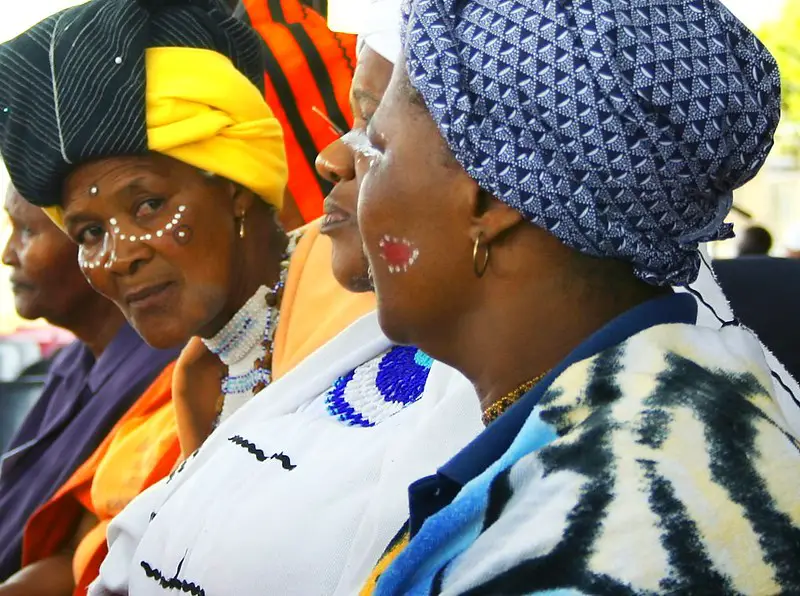There are many cultural and linguistic differences between the Zulu tribe and the Xhosa tribe. While they share similar ethnic roots, each has its own unique language, customs, beliefs and traditions which make them distinct from one another.
History of the Zulu tribe
(Image by Ron Porter from Pixabay )

The Zulu tribe is an ethnic group of Southern Africa, predominantly in South Africa. The Zulu are the largest ethnic group in South Africa with an estimated 10-12 million people living in the country. The Zulu language is part of the Bantu family and is closely related to other languages like Swati and Xhosa. The Zulu tribe has a rich history dating back to the early 19th century. The tribe was led by Shaka, who united many small chiefdoms into the powerful Zulu Kingdom. The kingdom reached its height under King Dingane but declined after his death. In 1879, the British invaded and annexed the Zululand after defeating King Cetshwayo in the Anglo-Zulu War. Today, the Zulu people are spread across South Africa and have significant populations in neighboring countries like Mozambique and Zimbabwe.
History of the Xhosa tribe
(Photo By Steve Slater on Flickr)

The Xhosa tribe is a large ethnic group in South Africa, and its members are known for their unique click languages. The history of the Xhosa people can be traced back thousands of years to the time when they were one of the many small tribes that inhabited southern Africa.
Over time, the Xhosa people assimilated with or were displaced by other groups, such as the Zulu. In the early 19th century, there was a major conflict between the Xhosa and the British colonial settlers known as the Cape Frontier Wars. This led to the displacement of many Xhosa people from their traditional lands.
In recent years, the Xhosa have made up a significant portion of the population of South Africa, and they continue to play an important role in the country’s culture and politics.
The culture and traditions the Zulu tribe
The Zulu tribe is renowned for its rich cultural heritage and traditions. From the traditional music and dance to the unique Zulu art and architecture, there is much to learn about this fascinating culture. The Zulu people have a strong sense of community and family, which is evident in their close-knit social structures.
Zulu customs and traditions are passed down from generation to generation, ensuring that these rich traditions are kept alive. One of the most important aspects of Zulu culture is the concept of Ubuntu, which emphasizes the importance of community and caring for others. This philosophy is evident in all aspects of Zulu life, from the way they raise their families to the way they interact with their neighbors.
The culture and traditions the Xhosa tribe
The Xhosa tribe is known for their unique culture and traditions. One of the most notable aspects of their culture is the fact that they have a strong tradition of oral history. This means that much of their history and traditions are passed down through stories, songs, and other forms of oral communication. This makes it difficult to date many of their traditions, but it also makes them very special.
Another important aspect of the Xhosa culture is their traditional clothing. The men often wear brightly colored clothes, and the women often wear white. This is a symbol of their status as a proud and noble people.
The Xhosa tribe is also known for their traditional music. This music is very unique, and it has a very powerful effect on those who hear it. It is said that the music can make even the strongest person feel weak in the knees.
If you are ever lucky enough to visit the Xhosa tribe, you will be sure to enjoy their unique culture and traditions.
Zulu tribe Vs. Xhosa tribe – Key differences
The Zulu and Xhosa tribes are two of the largest ethnic groups in South Africa, with unique cultural and historical backgrounds. Here are some key differences between the Zulu and Xhosa tribes:
Language: The Zulu and Xhosa tribes speak different languages. The Zulu language is part of the Nguni group of languages and is spoken by the Zulu people in KwaZulu-Natal province, while the Xhosa language is part of the Bantu group of languages and is spoken by the Xhosa people in Eastern Cape province.
Religion: The Zulu tribe traditionally practiced a form of ancestor worship, while the Xhosa tribe had a polytheistic religion that centered around a creator god and various deities.
Cultural practices: The Zulu tribe is known for their elaborate traditional clothing, beadwork, and dancing, while the Xhosa tribe is known for their initiation ceremonies and the practice of circumcision.
History: The Zulu tribe has a rich history of warfare and conquest, led by their legendary leader, King Shaka. The Xhosa tribe also has a history of conflict, including the Xhosa Wars against British colonialism in the 19th century.
Tribal structures: The Zulu tribe traditionally had a centralized monarchy, with the king as the ultimate authority. The Xhosa tribe had a more decentralized system of governance, with chiefs and kings ruling over smaller communities.
Why are the Zulus and Xhosas fighting?
There is no current conflict between the Zulu and Xhosa tribes in South Africa. However, historically, there have been conflicts and tensions between various ethnic groups in the region, including the Zulus and Xhosas.
One of the most notable conflicts between the two groups was the Battle of Blood River in 1838, where the Zulus were defeated by the Boers, a group of Dutch settlers, and their Xhosa allies. The Zulu-Xhosa wars of the 19th century were also a source of conflict between the two groups.
However, it is important to note that while there have been conflicts in the past, the Zulu and Xhosa tribes also share a common history and cultural heritage as Bantu-speaking peoples in South Africa. Today, both groups are part of a diverse South African society and contribute to the country’s cultural and political landscape.
Where do Xhosa originally come from?
The Xhosa people are a Bantu ethnic group that is native to South Africa. They are believed to have originated from the Great Lakes region of Central Africa and migrated southwards to their present location in South Africa over a period of several centuries.
The Xhosa people initially settled in the Eastern Cape region of South Africa, which is located on the southeastern coast of the country. The Xhosa tribe is made up of several sub-groups, including the Mfengu, Thembu, and Bhaca.
The Xhosa people have a rich cultural heritage that includes traditional music, dance, and clothing, as well as a long history of resistance against colonialism and apartheid. Notable Xhosa figures include Nelson Mandela, who was a prominent anti-apartheid activist and the first democratically elected President of South Africa, as well as the Xhosa warrior and prophetess Nongqawuse, who played a significant role in the Xhosa cattle-killing movement of the 19th century.
Where do Zulu originally come from?
The Zulu people are a Bantu ethnic group that is native to South Africa. The exact origin of the Zulu people is not known, but it is believed that they migrated from the north into what is now South Africa around the 16th century.
The Zulu people initially settled in the region that is now KwaZulu-Natal province, which is located on the eastern coast of South Africa. Over time, the Zulu tribe grew in power and influence, and in the early 19th century, they were united under the leadership of their legendary king, Shaka.
Under Shaka’s leadership, the Zulu tribe expanded their territory through a series of conquests and battles, and became one of the most powerful and dominant tribes in southern Africa.
Today, the Zulu people are one of the largest ethnic groups in South Africa, with a rich cultural heritage that includes traditional music, dance, and clothing, as well as a long history of bravery and resilience.
What do Xhosa woman wear?
Xhosa women in South Africa traditionally wear clothing that is brightly colored and decorated with intricate beadwork. The specific style of dress can vary depending on the occasion and the region, but there are some common elements that are typically found in Xhosa women’s attire.
One of the most iconic items of clothing worn by Xhosa women is the isidwaba, which is a pleated skirt made from brightly colored fabric. The skirt is often paired with a colorful top, called an isicolo, which is made from the same fabric and features a beaded neckline.
In addition to the isidwaba and isicolo, Xhosa women also wear various types of beaded jewelry, such as necklaces, bracelets, and earrings. These pieces are often brightly colored and feature intricate beadwork patterns that have cultural and symbolic significance.
Xhosa women may also wear a headwrap or scarf, which is often made from the same fabric as their skirt and top. The headwrap can be styled in a variety of ways, and may be used to indicate social status or convey a specific message or meaning.
Overall, Xhosa women’s clothing is characterized by its bold colors, intricate beadwork, and unique cultural symbolism.
What do Zulu woman wear?
Zulu women in South Africa traditionally wear clothing that is brightly colored and often adorned with beads and intricate patterns. The specific style of dress can vary depending on the occasion and the region, but there are some common elements that are typically found in Zulu women’s attire.
One of the most iconic items of clothing worn by Zulu women is the isicholo, which is a hat made from woven grass or other natural materials. The isicholo is often decorated with colorful beads, and may be paired with a beaded necklace, called a ithumbu.
Zulu women also wear a garment called an ibheshu, which is a skirt made from animal skin or a synthetic material. The ibheshu is often decorated with beadwork, and may be worn with a colorful beaded apron, called a isidwaba.
In addition to the ibheshu and isicholo, Zulu women also wear various types of beaded jewelry, such as necklaces, bracelets, and earrings. These pieces are often brightly colored and feature intricate beadwork patterns that have cultural and symbolic significance.
Zulu women may also wear a headwrap, called a doek, which is often made from a brightly colored fabric and tied in a variety of styles.
Overall, Zulu women’s clothing is characterized by its bold colors, intricate beadwork, and use of natural materials. The clothing and accessories worn by Zulu women are an important aspect of their cultural identity and heritage.
Featured Image By – max_thinks_sees









